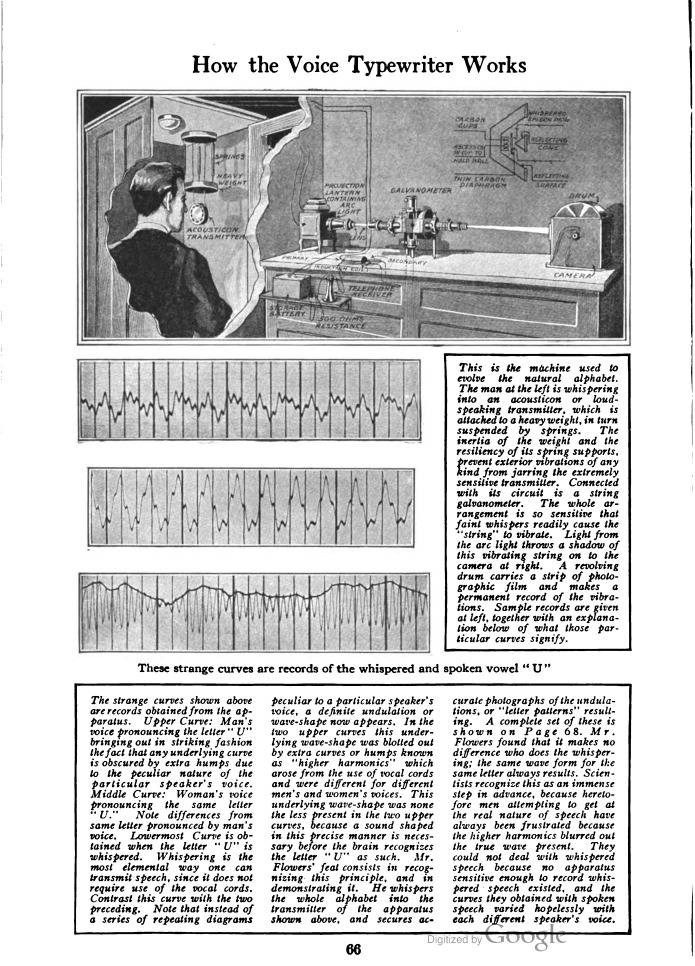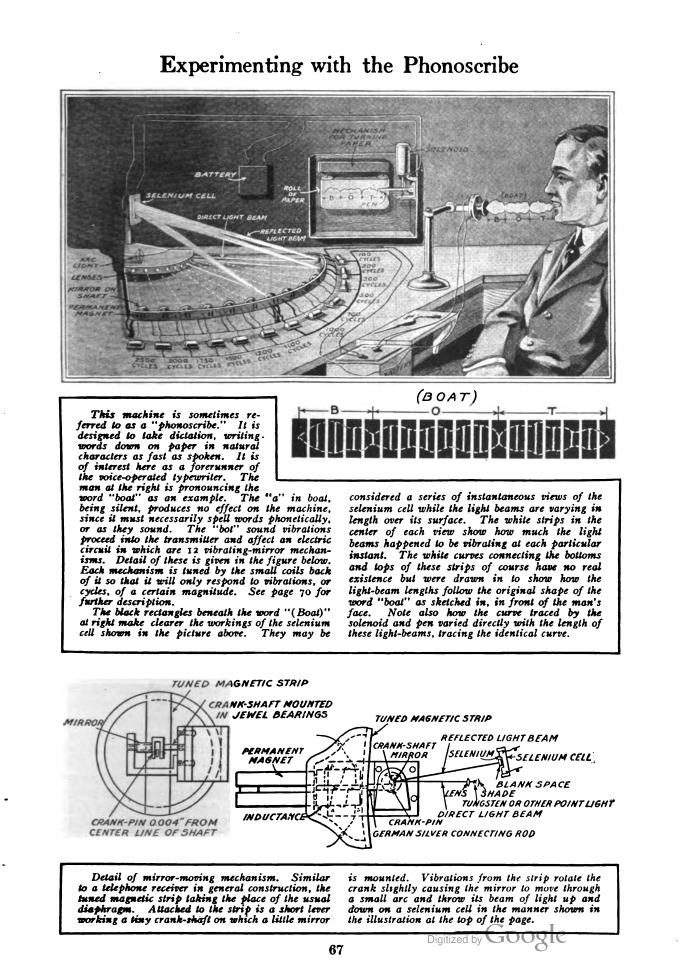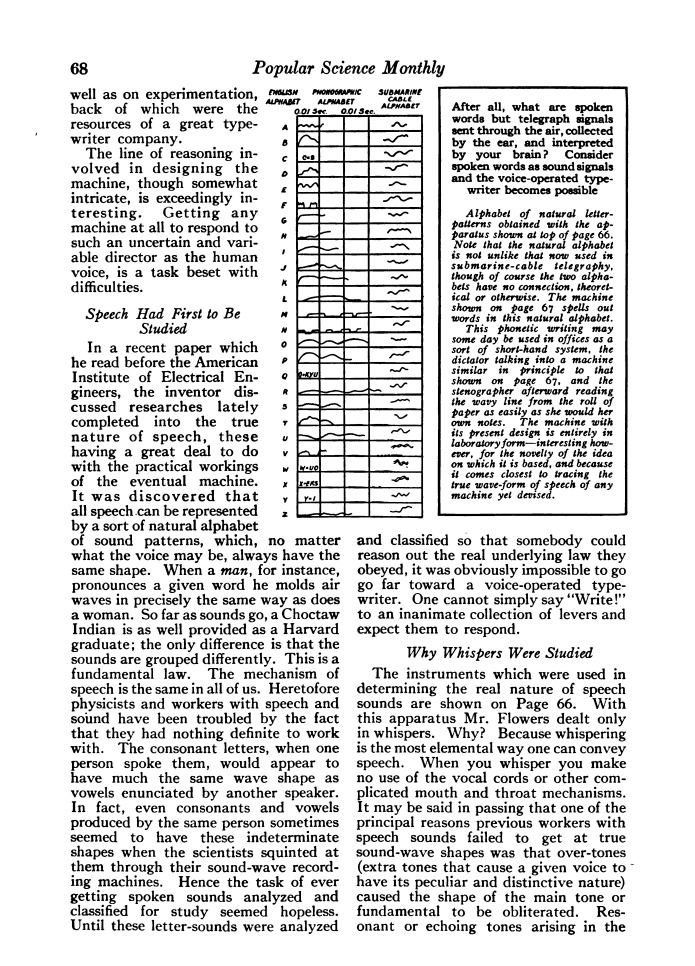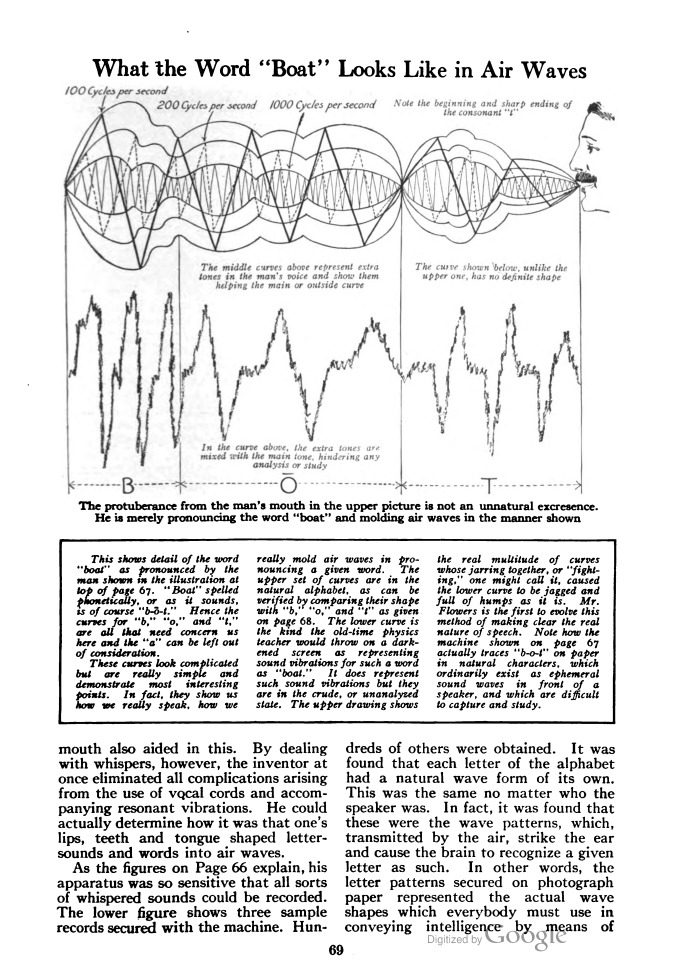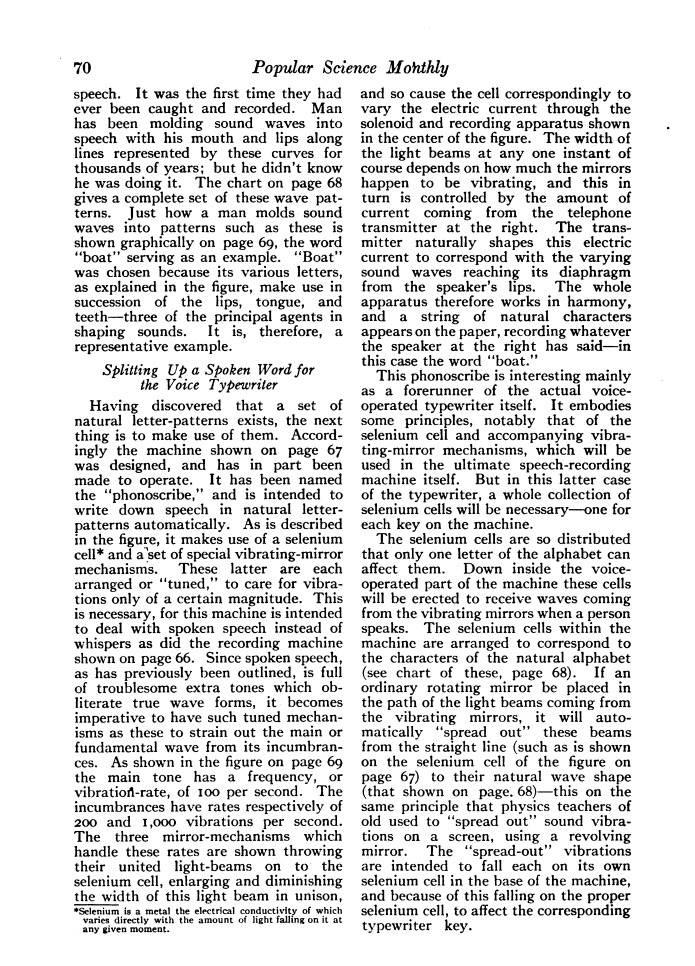Here in 2015 you’re doing pretty well if the voice recognition software on your PC, laptop or phone does a good job of accurately understanding what you’re saying. When I was a kid, the best voice recognition systems in the world would struggle to accurately transcribe speech, even when delivered as clearly and distinctly as possible. And before the development of capable computer systems, a voice recognition system would obviously be unthinkable. Except… a century ago, long before digital computers were even vaguely possible, someone was working on a voice recognizing “typewriter.” The fact that such things never seemed to make it into production indicate that the inventor must have had some substantial difficulties in getting the system fully functional, but it’s still an interesting and terribly steampunk idea. This is from the July, 1916, issue of “Popular Science Monthly,” and describes the complex machine envisioned by one John B. Flowers of Brooklyn. A system involving bright lights, mirrors and selenium cells would be used; when a word was spoken, the sounds would cause mirrors to vibrate, causing a reflected light beam to dance around a bit. The machine would have a mechanical memory of the various parts of speech and how the the vibrating light beam would affect the electrical output of the selenium cells, and would thus – supposedly – be able to type out the words spoken into the system.
It sounds not unlike how a modern electronic voice recognition system works. But getting it to work with such a crude electromechanical system sounds like it was probably far, far more effort than it was worth. Especially when a stenographer could have been had for a dime a day. Still, it’s an interesting notion. Could it with a steam-powered Babbage Difference Engine and you have an entirely impractical, virtually impossible to maintain, yet undeniably spiffy World War One-era supercomputer with voice interface.

